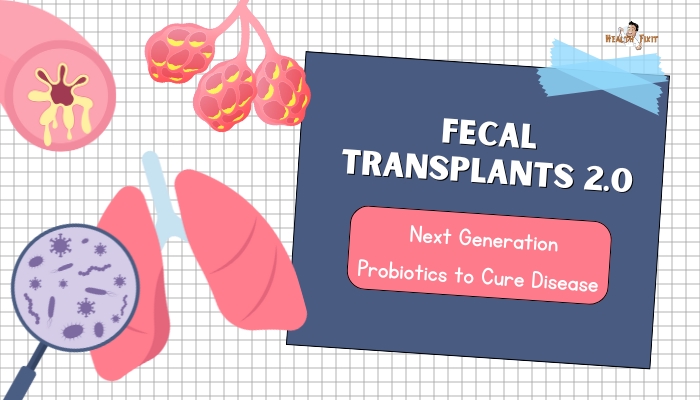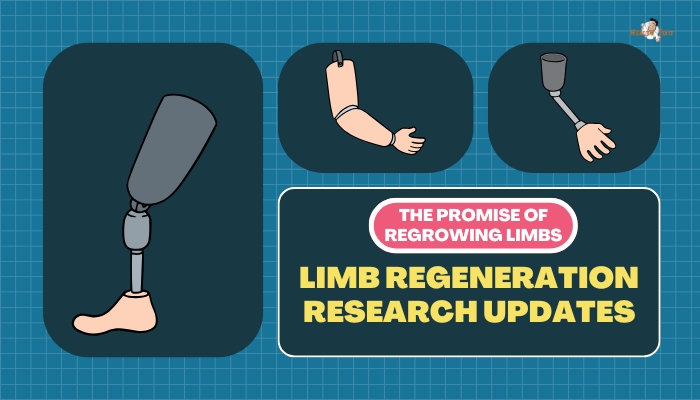Introduction
For decades, fecal microbiota transplantation (FMT)—transferring stool from a healthy donor to a recipient—has helped combat stubborn gut infections like Clostridioides difficile (C. diff). Its success has sparked a new wave of interest in microbiome-based therapies,
often dubbed “Fecal Transplants 2.0.” These next-generation probiotics and microbial consortia aim to provide the benefits of FMT in a safer,
more controlled manner. By isolating specific strains or engineering beneficial microbes, scientists seek to harness the gut’s healing potential without the variability of raw stool.
This article dives into the evolution of fecal transplants, the emerging class of live biotherapeutic products, and how they might reshape how we treat gastrointestinal and systemic diseases.
Fecal Transplant Basics and Limitations
How FMT Works
A classic fecal transplant involves transferring donor stool (via colonoscopy, enema, or oral capsules) to a patient to reintroduce healthy microbial diversity.
FMT demonstrates remarkable success against C. diff infections, boasting cure rates often exceeding 90%. The transplanted microbes outcompete the pathogen, restore normal gut function, and curb recurrent infections.
Limitations and Risks
- Safety Concerns: Raw stool can harbor unknown pathogens. While donors are screened, there’s still a small but real risk of transmitting infections.
- Variability: Each donor’s microbiome is unique, making consistency difficult to standardize. Two FMTs from different donors may have vastly different microbial compositions.
- Regulatory Ambiguity: FMT is often treated as an experimental procedure. Standardization of manufacturing and labeling remains an ongoing challenge.
The Rise of Next-Generation Microbiome Therapies
Rationally Designed Consortia
Scientists isolate and combine key bacterial strains with known beneficial functions—for instance,
spore-forming bacteria that can colonize the gut and produce metabolites that improve host immunity or inhibit pathogens. By precisely mixing strains, these “consortia” aim to deliver consistent and targeted results, unlike the broad unknown mixture in stool.
Single-Strain or Engineered Probiotics
Some approaches use a single “hero” strain that’s been proven particularly effective, or genetically engineered microbes designed to produce specific anti-inflammatory molecules or degrade harmful compounds.
This can address conditions beyond infections, such as inflammatory bowel disease or metabolic syndrome, by carefully modulating the gut environment.
Advanced Formulation and Delivery
Unlike raw stool, these next-gen products often come in standardized capsules, freeze-dried powders, or other oral forms that are shelf-stable and easier for patients to consume.
Encapsulation strategies protect bacteria from stomach acid, ensuring they reach the colon alive.
Key Therapeutic Targets
Persistent C. diff Infections
Even with antibiotics, recurrent C. diff remains a major hospital-acquired threat. FMT paved the way, but standardized microbial cocktails (e.g., SER-109, RBX2660) aim to deliver similar efficacy with better safety and consistent composition.
Inflammatory Bowel Disease (IBD)
Diseases like Crohn’s and ulcerative colitis involve dysregulated immune responses to gut microbes. Next-gen probiotics or targeted bacterial therapies might dampen inflammation and foster remission, though early trials show mixed or modest results thus far.
Metabolic Disorders and Obesity
Some studies link certain gut bacteria to metabolic improvements. Clinical trials testing microbiome-based therapies for insulin resistance or obesity are underway. While definitive “weight-loss bugs” remain elusive, promising leads exist in shaping energy metabolism.
Other Emerging Areas
- Autoimmune Conditions: Rheumatoid arthritis and multiple sclerosis might be partly modifiable by gut microbial shifts.
- Liver Diseases: Non-alcoholic fatty liver disease (NAFLD) and cirrhosis patients could benefit from microbiome interventions targeting gut–liver axis.
- Mental Health: The gut–brain axis suggests that probiotic or FMT-like strategies might help certain anxiety or depression subsets, though more evidence is needed.
Challenges to Implementation
Regulatory Hurdles
Live microbial products are neither classic pharmaceuticals nor typical foods. Agencies like the FDA or EMA classify them as Live Biotherapeutic Products (LBPs)
, requiring rigorous safety and efficacy data. This process can be lengthy, and each strain or consortium must be evaluated thoroughly.
Manufacturing Complexity
Maintaining purity and viability across multiple strains is nontrivial. Each microbe can require unique growth conditions, and the final blend must remain stable. Ensuring consistent dosing for clinical use demands advanced production infrastructure and stringent QC.
Individual Variability
Each person’s baseline microbiome differs. The same microbial product might be beneficial for some but have less impact for others.
Personalized strategies—where a test kit identifies a patient’s deficiency, then matches them with a tailored consortium—could be future standard, but it adds complexity.
Current Status and Future Directions
FMT Still a Mainstay
For recurrent C. diff, FMT remains a validated, high-success-rate approach. But novel “cultured-microbiome” therapies are poised to replace or complement it if they demonstrate similar efficacy with fewer safety concerns.
Ongoing Clinical Trials
Biotech companies are testing new LBPs in Phase II or III trials for C. diff, IBD, and other conditions. Early successes, such as SER-109 obtaining FDA approval for reducing recurrent C. diff infection, mark a turning point for microbiome-based therapeutics.
Toward Personalized Microbiome Medicine
In the long run, the vision is to tailor each microbial formulation to a patient’s gut profile, disease, and genetic background. This big-data approach would harness advanced microbiome sequencing, machine learning, and specialized production lines for truly individualized therapy.
Practical Tips for Patients and Providers
- Check Clinical Trials: Next-gen microbiome therapies for gut disorders may be recruiting participants. Reputable trial registries can inform if you qualify.
- Discuss with Specialists: If you have recurrent C. diff or IBD not responding to standard care, ask a gastroenterologist about microbiome-based options.
- Avoid Unregulated DIY: Attempting “home FMT” or unproven products carries infection risk. Seek licensed facilities or properly tested therapies.
- Stay Updated: Microbiome science evolves rapidly. A probiotic that’s promising today might be overshadowed by next year’s advanced consortium.
Conclusion
Fecal microbiota transplantation demonstrated the transformative power of harnessing healthy gut microbes to treat persistent infection.
Now, the field is entering a second phase—Fecal Transplants 2.0—where refined, next-generation probiotics and microbial consortia aim to deliver the same or better benefits with improved safety and standardization.
By replacing raw stool with carefully curated bacterial blends or single-strain solutions, scientists hope to expand the reach of microbiome therapy to conditions ranging from inflammatory bowel disease to obesity.
While challenges remain—particularly around regulation, manufacturing, and personalized response—progress is steady.
As robust clinical trials are completed, we can anticipate more “off-the-shelf” microbiome medicines reaching patients.
Ultimately, these new therapies underscore the vital role of gut microbes in health and disease, marking a major leap forward from traditional fecal transplants to a world where precision-engineered probiotics revolutionize gastrointestinal and systemic treatment.
References
- Kelly CR, Ihunnah C, Fischer M, et al. Fecal microbiota transplant for refractory C. difficile infection in immunocompromised patients. Am J Gastroenterol. 2014;109(7):1065–1071.
- Khanna S, Seekatz AM, Wolff BG, et al. Fecal microbiota transplant for recurrent Clostridium difficile infection in older patients: a rigorous review. Infect Dis Clin North Am. 2015;29(1):99–112.
- Allegretti JR, Mullish BH, Kelly C, Fischer M. The evolution of the use of fecal microbiota transplantation and emerging therapeutic indications. Clin Infect Dis. 2020;71(10):2540–2548.
- Mullard A. SER-109 edges microbiome-based treatments into mainstream. Nat Rev Drug Discov. 2022;21(9):653–655.
- Suez J, Zmora N, Segal E, Elinav E. The pros, cons, and many unknowns of probiotics. Nat Med. 2019;25(5):716–729.
- Petrof EO, Gloor GB, Vanner SJ, et al. Stool substitute transplant therapy for the eradication of Clostridium difficile infection: ‘RePOOPulating’ the gut. Microbiome. 2013;1(1):3.
- Lloyd-Price J, Abu-Ali G, Huttenhower C. The healthy human microbiome. Genome Med. 2016;8(1):51.
- Smith MB, Kelly C, Alm EJ. Policy: How to regulate faecal transplants. Nature. 2014;506(7488):290–291.
- DeFilipp Z, Bloom PP, Torres Soto M, et al. Drug-resistant E. coli infection after FMT. N Engl J Med. 2019;381(21):2043–2050.
- Ott SJ, Weber TE, Fiedorowicz L, et al. Engineering the microbiome: Bioinformatic and experimental approaches. Bioessays. 2020;42(6):e2000011.




